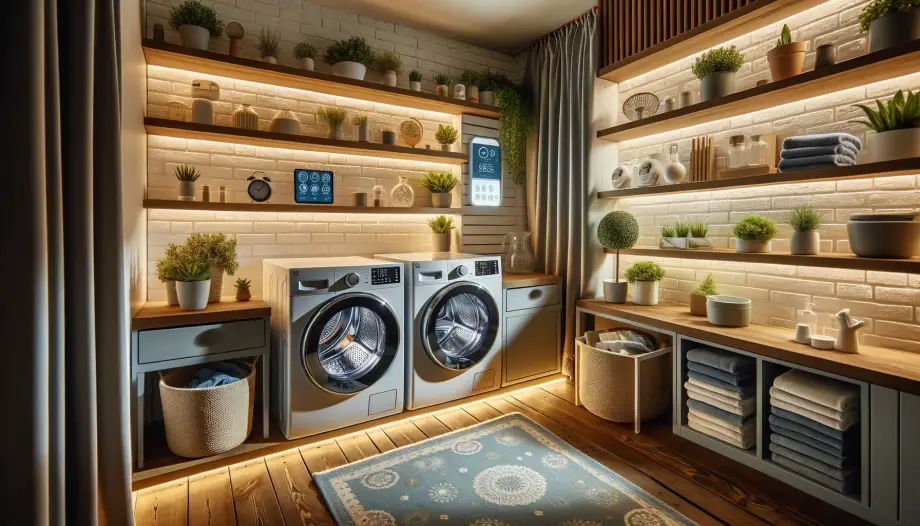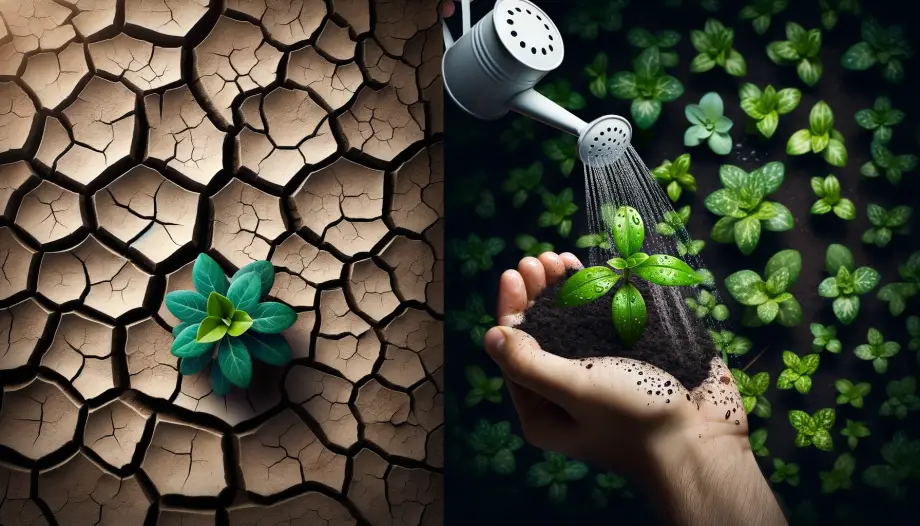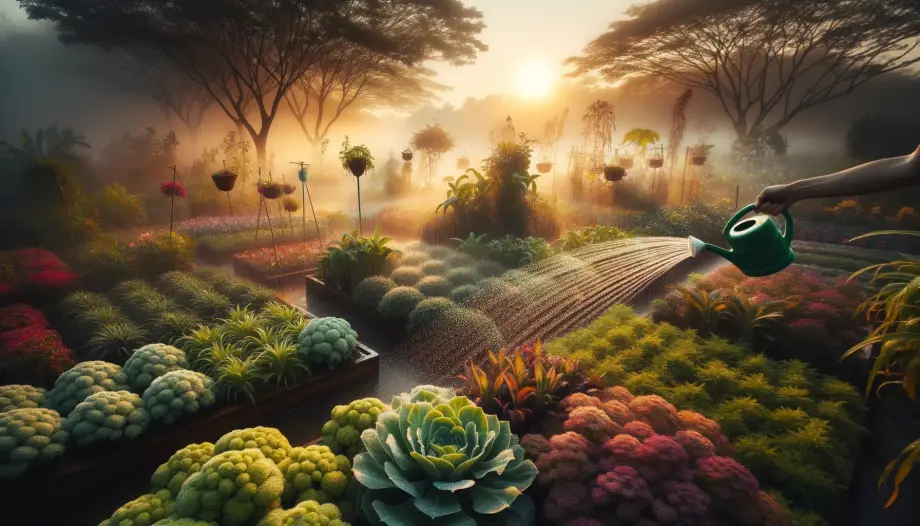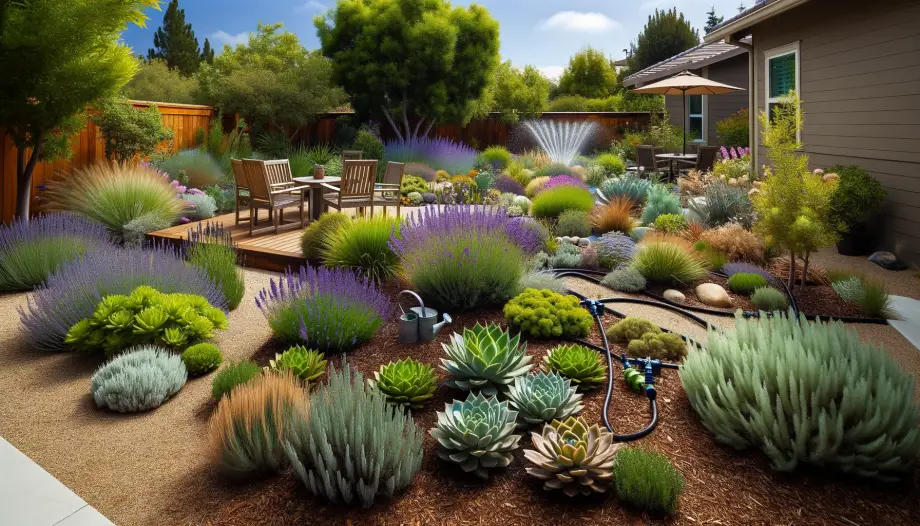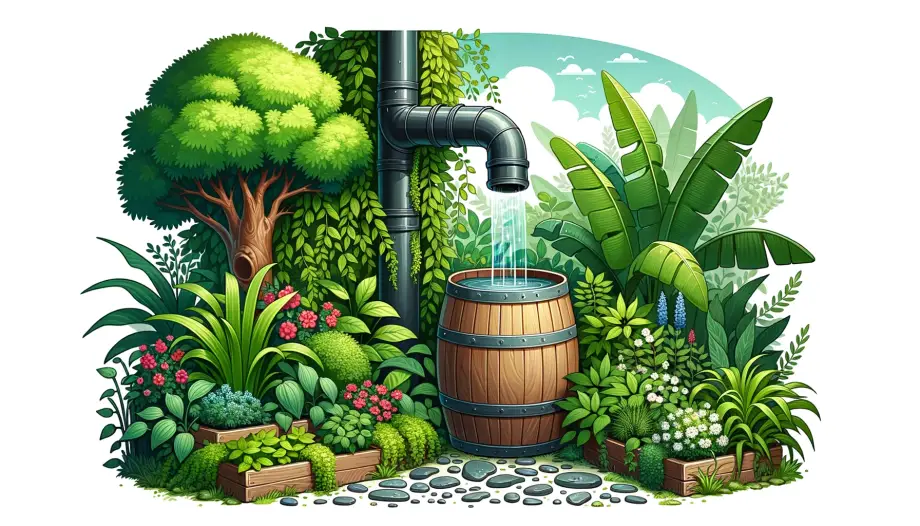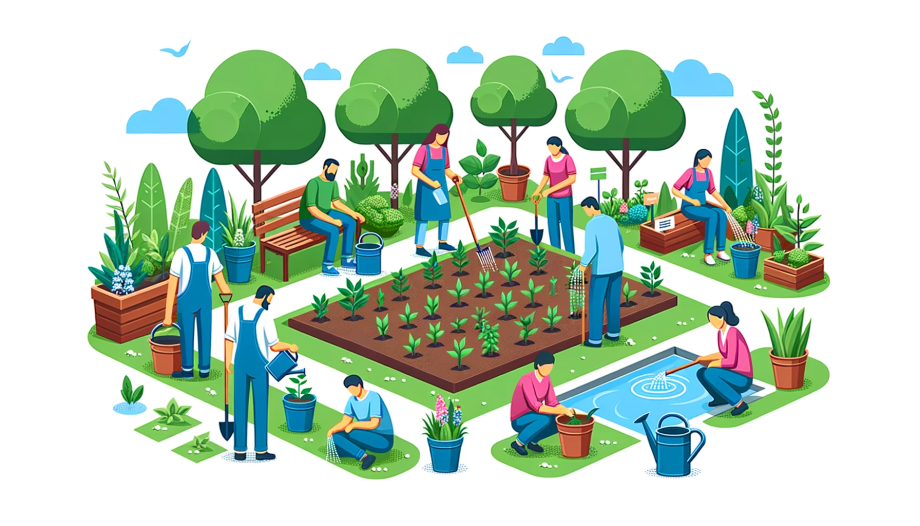
Discover a treasure trove of practical water conservation tips in our latest blog post. Learn easy, impactful ways to save water and contribute to a greener planet!
Water Conservation Key Takeaways:
- Water conservation tips include fixing leaks promptly.
- Installing low-flow fixtures.
- Utilizing rain barrels for garden watering.
- Practicing wise irrigation techniques.
- Opting for water-efficient appliances.
- These simple steps can significantly reduce water usage, promoting a sustainable and eco-friendly living environment.
Water Conservation Tips
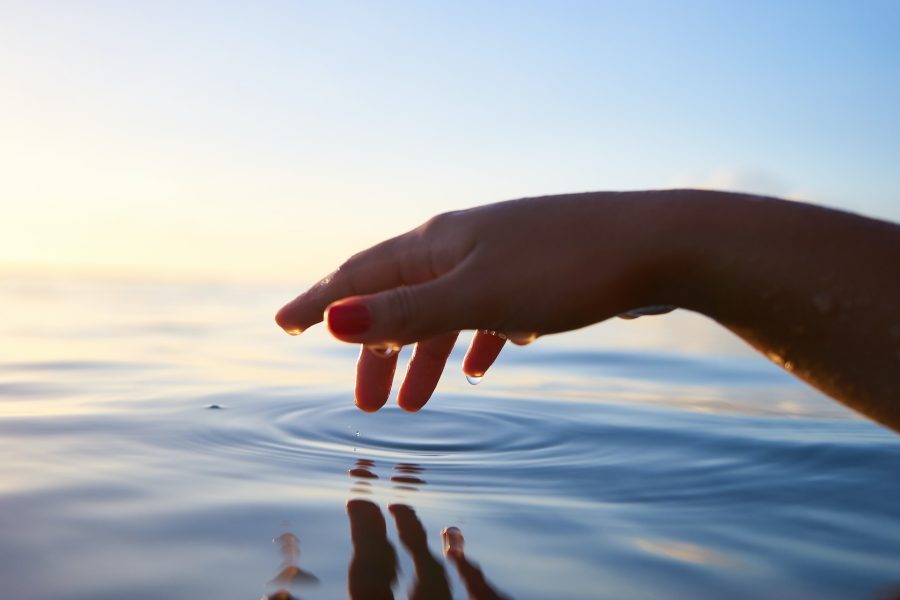
Embarking on a journey of water conservation doesn’t have to be daunting.
Our latest post unveils a plethora of Water Conservation Tips that are simple yet impactful.
With easy-to-follow advice and practical solutions, you’ll find becoming a water-wise citizen is a breeze and a step closer to a sustainable lifestyle.
Why Water Conservation is Important
Water is a life-sustaining resource, yet everyday gallons of water are wasted through inefficient practices.
As the backbone of our existence and a crucial part of many industrial processes, the importance of water conservation cannot be stressed enough.
This guide will delve into practical tips to conserve water and make a positive impact on our planet.
Definition and Importance of Water Conservation:
Water conservation refers to the practices aimed at reducing water usage both indoors and outdoors.
It’s about utilizing less water to fulfill the same purposes and needs.
Simple acts like fixing leaky faucets, altering how we do laundry, or upgrading to a modern washing machine can save significant amounts of water over time.
By understanding and adopting water conservation measures, we can ensure a reliable water supply while also reducing the pressure on our water infrastructure.
Water conservation includes all the policies, strategies and activities to sustainably manage the natural resource of fresh water, to protect the hydrosphere, and to meet the current and future human demand (thus avoiding water scarcity). Population, household size and growth and affluence all affect how much water is used. Factors such as climate change have increased pressures on natural water resources especially in manufacturing and agricultural irrigation. Many countries have already implemented policies aimed at water conservation, with much success. From Wikipedia
Impact of Water Conservation on the Environment and Sustainable Living:
Water conservation is an eco-friendly practice with far-reaching benefits.
When we use less water, we reduce the energy required to process and deliver it, which in turn helps to reduce pollution and the emission of greenhouse gases.
The less water runs down our drains and into the garbage disposal, the less water we need to treat, which again saves energy and reduces pollution.
Additionally, water conservation promotes sustainable living by encouraging the efficient use of natural resources, which is essential for the balance of our ecosystem.
Through simple measures like taking shorter showers, utilizing native plants in landscaping, and reducing water waste in our daily chores, we contribute to a culture of sustainability, ensuring a healthier environment for future generations.
Understanding the Basics
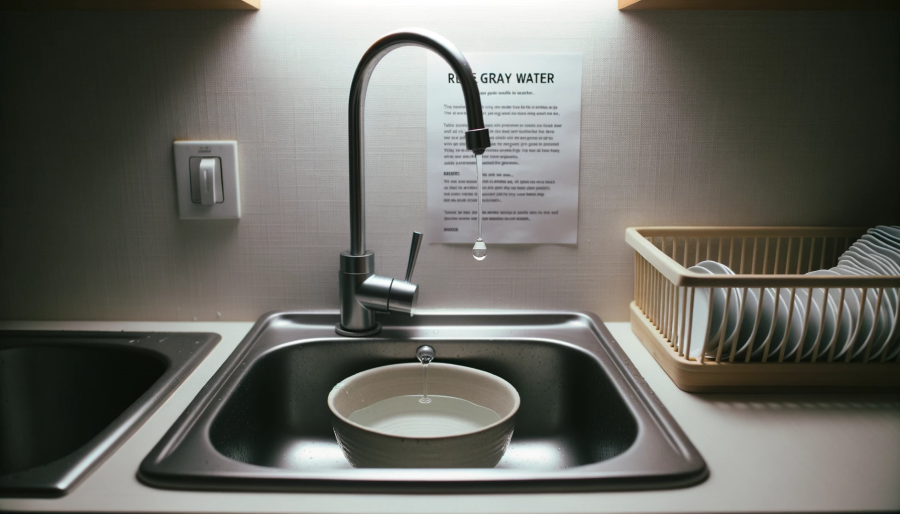
In the journey toward effective water conservation, understanding the basic principles is paramount.
A solid grasp of how water moves and replenishes itself within our environment lays the foundation for appreciating the need for conservation.
The subsequent sections provide a closer look into the fundamentals of water conservation, enlightening you on the natural water cycle, and how simple everyday practices can contribute significantly to water conservation.
Understanding the Water Cycle: The First Step in Conservation
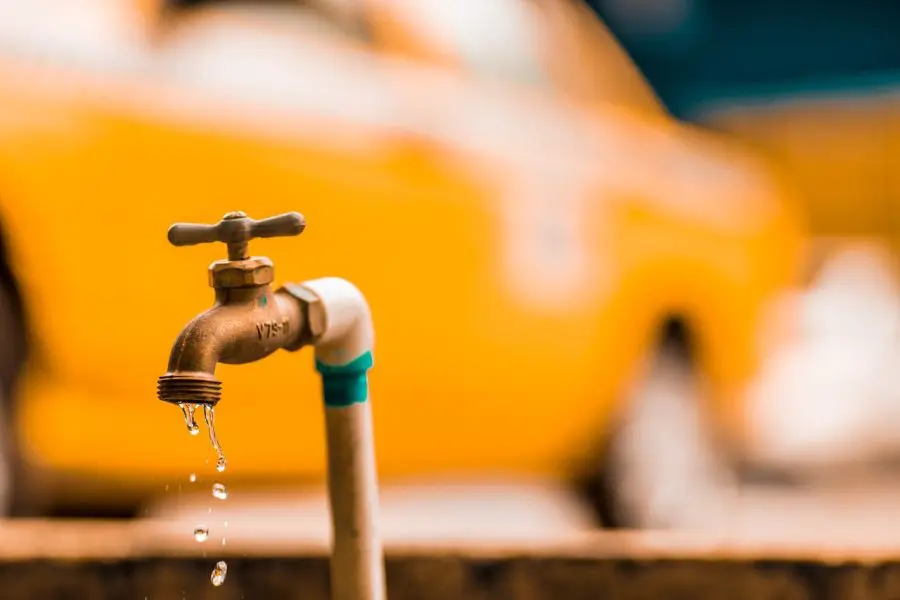
The water cycle, also known as the hydrological cycle, is the continuous movement of water on, above, and below the surface of the Earth.
This cycle comprises several stages including evaporation, condensation, precipitation, and runoff.
Every drop of water we use undergoes this cycle, from the water we see in rivers and lakes to the water that comes out of our faucets.
Understanding this cycle is pivotal as it sheds light on how water is naturally conserved and replenished in our environment.
Explanation of the water cycle and its relation to water conservation:
The water cycle is nature’s way of recycling water. It ensures that the same water is used over and over again.
However, human activities can disrupt this cycle, leading to water scarcity in some areas.
When we use water wisely, we aid the natural water cycle instead of hindering it.
For instance, overuse of groundwater can lead to depletion of water tables, affecting the amount of water available for both human use and natural ecosystems.
How understanding the water cycle can aid in effective water conservation:
By comprehending the water cycle, we become more aware of the journey water takes before reaching our taps.
This awareness can foster a greater appreciation for this vital resource, motivating individuals and communities to engage in water conservation practices.
Whether it’s by reducing water run while washing dishes, or fixing dripping faucets promptly, understanding the water cycle can inspire more mindful and sustainable water use.
Through education and awareness, we can contribute to a culture of conservation, ensuring a steady water supply for ourselves and future generations while also promoting a healthier environment.
Water conservation doesn’t have to be a cumbersome task; rather, it can be achieved through simple daily practices and minor behavioral changes.
By adopting a few water-saving habits, individuals can significantly reduce their water usage, save on utility bills, and contribute to a sustainable environment.
Here’s a beginner’s guide to everyday savings on water usage:
Simple Daily Practices to Conserve Water:
- Check for Leaks: Regularly check for leaky faucets, pipes, and fixtures. A small drip from a leaking faucet can waste 20 gallons of water per day.
- Use Water-Saving Appliances: Upgrade to water-efficient appliances like an ENERGY STAR-CERTIFIED washing machine which uses 40% less water than a standard model.
- Collect Rinse Water: Instead of letting rinse water run down the drain, collect it in a basin and reuse it to water plants or flush the toilet.
- Shower Smart: Install a low-flow showerhead to use less water during showers. Also, keep showers short and avoid filling the bathtub full for a bath.
- Cover Your Pool: Use a pool cover to reduce evaporation and save thousands of gallons of water each month.
Behavioral Changes for Water Conservation:
Mindful Water Use: Be conscious of the water you use and try to reduce wastage. For instance, turn off the tap while brushing teeth or scrubbing dishes.
- Water Plants Wisely: Water plants early in the morning or late in the evening when temperatures are cooler to minimize evaporation. Implement a drip irrigation system for efficient watering.
- Full Loads Only: Run your dishwasher and washing machine only when you have full loads to make the most efficient use of water.
- Avoid Running Water Continuously: While cleaning vegetables or doing dishes, fill one side of the sink with soapy water and the other side with rinse water instead of letting the water run continuously.
- Educate Family Members: Make water conservation a family effort by educating all family members on the importance of saving water and how to do it.
By incorporating these simple tips and making small behavioral adjustments, individuals can play a significant part in water conservation.
Over time, these small steps can accumulate into substantial water savings, promoting a culture of wise water use and sustainable living.
II. Practical Tips for Homeowners

The home is where one’s journey toward effective water conservation truly begins.
By implementing practical and straightforward measures, homeowners can significantly reduce water wastage, save on utility bills, and contribute to a broader environmental cause.
This section unfolds a variety of effective water conservation techniques that are easy to adopt and maintain in our daily routines.
Effective Water Conservation Techniques for Homeowners
Water conservation at home can be achieved by both installing water-saving fixtures and appliances and being vigilant about leak detection and repair. Here are some insights into these aspects:
Water-Saving Fixtures and Appliances:
- Low-Flow Faucets and Showerheads: Installing low-flow faucet aerators and showerheads can reduce water usage by up to 50%.
- Water-Efficient Appliances: Opt for appliances with the ENERGY STAR label as they are designed to use less water and energy. For instance, an ENERGY STAR-certified clothes washer uses about 40% less water than regular washers.
- Dual Flush Toilets: These toilets have two flush options – a half flush for liquid waste and a full flush for solid waste, aiding in significant water savings.
Leak Detection and Repair:
- Regular Inspection: Conduct regular inspections to identify any leaky faucets, showerheads, or pipes. A small leak can lead to a waste of over 3,000 gallons of water annually.
- Water Meter Monitoring: Keep an eye on your water meter. If it’s running when all water sources are turned off, there may be a leak.
- Professional Help: If you’re unable to identify or fix a leak, consider hiring a professional plumber to ensure all leaks are fixed promptly.
10 Simple Ways to Reduce Water Usage in Your Garden
The garden is another area where a significant amount of water can be saved with just a little planning and smart practices. Here are ten simple ways to conserve water in your garden:
- Choosing Drought-Tolerant Plants:
- Opt for Native Plants: Native plants are accustomed to the local climate and soil conditions, thus requiring less water.
- Drought-Resistant Varieties: Choose plants that are known for their drought tolerance. They will thrive with minimal watering, even in dry conditions.
- Efficient Irrigation Techniques:
- Drip Irrigation: Installing a drip irrigation system can help ensure water goes directly to the plant’s roots, reducing evaporation and runoff.
- Soaker Hoses: Unlike traditional sprinklers, soaker hoses deliver water directly to the soil, minimizing evaporation.
- Mulching: Applying a layer of mulch around plants helps retain soil moisture, reducing the need for frequent watering.
- Watering at the Right Time: Watering early in the morning or late in the evening when temperatures are cooler can significantly reduce evaporation losses.
With these practical tips, homeowners can easily transition into water conservationists, making a significant difference in their water usage while promoting a sustainable and eco-friendly living environment
How to Install an Irrigation Timer for Water Conservation
Optimizing the watering schedule in your garden is a significant step towards efficient water conservation.
An irrigation timer is a handy tool that allows you to automate this process, ensuring that your plants receive the right amount of water at the right time.
Here’s how an irrigation timer can be a game-changer and how to install one:
- Benefits of Scheduling Watering Times:
- Reduced Water Waste: By watering your garden at the optimal times, you can significantly reduce water evaporation and runoff, thus saving gallons of water.
- Healthier Plants: Properly scheduled watering promotes healthier, stronger plants by preventing over-watering or under-watering.
- Time and Effort Saving: An irrigation timer automates the watering process, saving you time and effort in manual watering.
- Step-by-Step Guide on Installation:
- Choose the Right Timer: Select an irrigation timer that suits your garden size and the type of irrigation system you have.
- Shut Off Water Supply: Before installation, ensure the water supply to the irrigation system is turned off.
- Install the Timer: Follow the manufacturer’s instructions to install the timer to your irrigation system. This usually involves attaching the timer to the faucet and connecting it to the sprinkler system.
- Set the Schedule: Program the timer with your preferred watering schedule, considering the early morning or late afternoon as the best time to water to reduce evaporation.
- Test the System: Turn the water back on and run a test to ensure the timer operates the irrigation system as scheduled.
Implementing Water Reuse Strategies in Your Home
Water reuse is an excellent way to conserve water, and with modern technology, it has become easier and safer.
Here’s a brief introduction to greywater and rainwater harvesting systems and tips for implementing these strategies in your home:
- Introduction to Greywater and Rainwater Harvesting Systems:
- Greywater Systems: Greywater refers to gently used water from bathroom sinks, showers, tubs, and washing machines. A greywater system captures this water before it goes down the drain and redirects it for use in flushing toilets or watering the garden.
- Rainwater Harvesting: This system collects rainwater from rooftops and other surfaces, stores it, and redirects it for use in outdoor watering or other non-potable uses.
- Tips on Safe and Effective Water Reuse:
- Use Biodegradable Soaps: If you plan to reuse greywater, ensure to use biodegradable, non-toxic soaps to prevent soil and plant damage.
- Maintain Your Systems: Regular maintenance is crucial to ensure your water reuse systems operate effectively and safely.
- Adhere to Local Regulations: Check with your local government to understand the regulations surrounding water reuse and ensure your systems comply.
- Educate Your Household: Ensure all family members are aware of the water reuse systems in place and understand the importance of avoiding the disposal of harmful substances down the drain.
By integrating an irrigation timer and water reuse strategies, homeowners can significantly up their water conservation game, leading to lower utility bills and a greener planet.
III. Landscaping and Outdoor Conservation
Landscaping and outdoor spaces are often areas where a considerable amount of water is used, especially in maintaining lush lawns and vibrant gardens.
However, with smart choices and sustainable practices, it’s possible to create beautiful outdoor spaces while significantly reducing water usage.
This section delves into the choice of plants, sustainable landscaping practices, and rainwater harvesting – all aimed at conserving water in your outdoor spaces.
Low-Water-Use Plants: A Guide for Sustainable Landscaping
Choosing the right plants can make a big difference in the amount of water required to maintain your garden.
Here’s a guide on selecting low-water-use plants and the benefits they bring to your landscaping efforts:
- Choosing Native and Drought-Tolerant Plants:
- Native Plants: These are adapted to the local soil and climate conditions, requiring less water and care compared to non-native species.
- Drought-Tolerant Plants: They thrive with minimal water, making them a great choice for water conservation in your garden.
- Benefits of Sustainable Landscaping:
- Reduced Water Usage: By opting for plants that require less water, you significantly reduce your garden’s water consumption.
- Lower Maintenance: Native and drought-tolerant plants require less maintenance, saving you time and effort in the garden.
Regional Native Plants for Water-Smart Landscaping
The use of regional native plants is a smart choice for water conservation.
Here’s why they are important and some examples based on various zones:
- Importance of Using Regional Native Plants:
- Adaptation to Local Conditions: Native plants are well-adapted to local soil, climate, and pest conditions, reducing the need for additional water, fertilizers, and pesticides.
- Support Local Ecosystems: They provide habitat and food for local wildlife, promoting biodiversity.
- List of Regional Native Plants for Various Zones:
- Zone 3: Wild Strawberry, Butterfly Weed
- Zone 4: New England Aster, Black-Eyed Susan
- Zone 5: Coneflower, Blazing Star
- Zone 6: Switchgrass, Joe-Pye Weed
- Zone 7: River Birch, Winterberry
- Zone 8: Lantana, Sage
Benefits of Rainwater Harvesting for Water Conservation
Rainwater harvesting is a traditional and effective way of conserving water. Here’s how it contributes to water conservation and how to set up a system:
- How Rainwater Harvesting Contributes to Water Conservation:
- Reduced Demand on Water Supply: Collecting and using rainwater reduces the demand on the municipal water supply.
- Minimized Runoff and Erosion: It helps in reducing runoff, which can cause erosion and flooding, and also helps in preventing pollutants from entering water bodies.
- Setting Up a Rainwater Harvesting System:
- Collection Area: Identify and prepare the areas where rainwater will be collected, like rooftops.
- Gutters and Downspouts: Install gutters and downspouts to channel rainwater into your collection system.
- Storage Tanks: Install storage tanks to collect the rainwater. Ensure they are covered to prevent evaporation and mosquito breeding.
- Filtration System: Install a filtration system to clean the collected water if it will be used for indoor plants or other sensitive uses.
- Distribution System: Set up a distribution system, like a soaker hose or drip irrigation, to use the collected rainwater in your garden.
By embracing these landscaping and outdoor conservation strategies, homeowners can create beautiful, enjoyable outdoor spaces while significantly reducing their water usage and contributing to a more sustainable environment.
IV. Technology and Water Conservation
As technology advances, so do the opportunities to enhance water conservation efforts.
Modern technological tools and appliances have been engineered to help individuals, households, and communities better manage water usage.
This section will explore how technology, including smart water meters, leak detection systems, and water-efficient appliances, plays a crucial role in promoting water conservation.
The Role of Technology in Promoting Water Conservation
Technology has become a cornerstone in the realm of water conservation, offering tools and resources that make it easier to save water.
- Smart Water Meters and Leak Detection Systems:
- Smart Water Meters: These devices provide real-time data on water usage, enabling homeowners to better understand their consumption patterns and identify areas for reduction.
- Leak Detection Systems: Modern leak detectors can alert you to water leaks in real-time, preventing water waste from unnoticed leaks.
- Water-Saving Appliances:
- Efficiency Ratings: Look for appliances with high water efficiency ratings. The less water they use, the lower your water bill will be.
- Programmable Features: Many modern appliances have programmable features that allow for customized water use, ensuring only the necessary amount of water is used for each task.
Smart Appliances That Help in Water Conservation
The advent of smart appliances has significantly contributed to water conservation efforts.
Let’s delve into some water-efficient appliances and how technology aids in monitoring water usage.
- Review of Water-Efficient Appliances:
- Smart Washing Machines: Equipped with sensors to adjust the water level based on the load, ensuring no excess water is used.
- Low-Flow Toilets and Faucets: These appliances are designed to use less water while maintaining effective functionality.
- How Technology Helps in Monitoring Water Usage:
- Remote Monitoring: Smart appliances often come with apps that allow for remote monitoring and control of water usage.
- Usage Reports: Many smart appliances provide detailed water usage reports, helping homeowners identify areas for improvement.
V. Community and Educational Initiatives
Creating a culture of water conservation extends beyond individual efforts to community and educational initiatives.
This section explores how communities can band together for water conservation and how educating the younger generation is pivotal for long-term water sustainability.
Creating a Water-Smart Community: Steps to Take
A collective effort in a community can significantly amplify the impact of water conservation initiatives.
- Community Programs and Initiatives for Water Conservation:
- Water Audits: Encourage community members to conduct water audits to identify areas of waste and implement water-saving measures.
- Community Workshops: Organize workshops to educate community members on water conservation techniques and technologies.
- Benefits of a Water-Smart Community:
- Shared Resources: Communities can pool resources to invest in water-saving technologies and infrastructure.
- Increased Awareness: A collective focus on water conservation fosters a culture of awareness and responsible water usage.
Teaching Kids the Value of Water Conservation Through Fun Activities
Instilling the value of water conservation in the younger generation is crucial for fostering a sustainable future.
- Educational Games and Activities for Water Conservation:
- Interactive Workshops: Arrange workshops with interactive games that educate kids on the water cycle, water conservation, and wise water use.
- Outdoor Explorations: Organize field trips to local water treatment plants or nature reserves to provide hands-on learning experiences.
- Importance of Educating the Younger Generation on Water Conservation:
- Long-Term Impact: Educating kids on water conservation sows the seeds for a lifetime of responsible water usage.
- Empowerment: Knowledgeable kids are empowered to make wise water use decisions and influence others in their community.
Through the integration of modern technology and community engagement, the path towards comprehensive water conservation becomes a collaborative endeavor with lasting benefits.
VI. Advanced Home Water Conservation Strategies
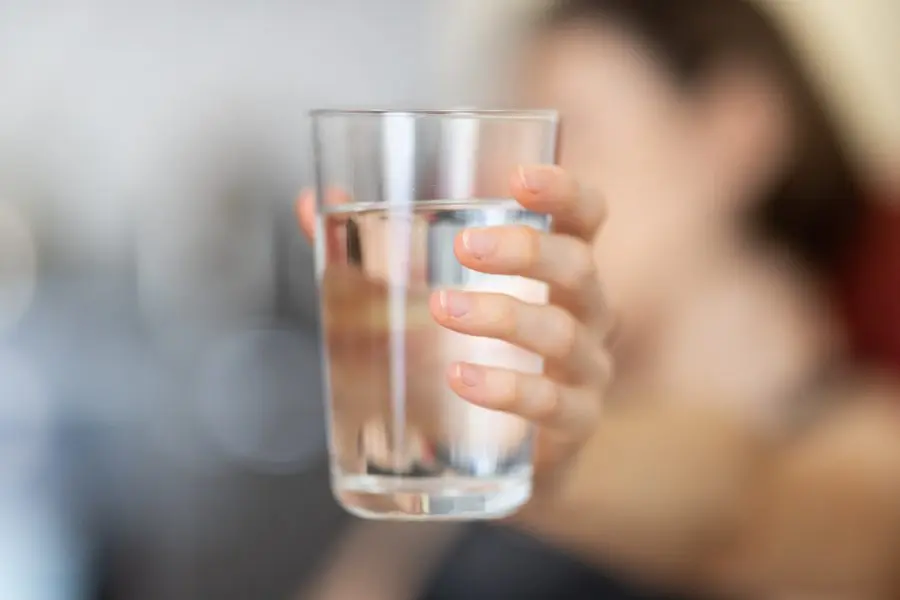
Venturing into advanced water conservation strategies unveils a realm where every drop of water is treated as a precious resource.
This section delves into how slight modifications in your household water flow, addressing leaks promptly, and adopting efficient laundry and dishwashing practices can lead to substantial water savings.
The journey towards achieving a water-efficient home doesn’t stop at the basics; it propels forward into adopting practices that resonate with a deep-seated respect for this invaluable natural resource.
Through understanding and implementing the strategies discussed herein, you’ll not only see a significant reduction in water usage but also foster a living environment that echoes sustainability at every faucet turn.
Optimizing Household Water Flow and Pressure
- Understanding Water Flow: The rate at which water flows through your appliances and fixtures impacts how much water is used. Assessing and optimizing water flow can lead to significant water savings.
- Adjusting Water Pressure: High water pressure can lead to a lot of water wastage. Installing pressure-reducing valves can help maintain a water pressure that is efficient yet effective.
Addressing Leaks and Older Fixtures
- Fixing Leaks: Leaky toilets, faucets, and other fixtures can result in substantial water loss. Regularly inspect for leaks and fix them promptly to conserve water.
- Upgrading Older Toilets and Faucets: Older toilets and faucets tend to use much more water than newer, more efficient models. Consider upgrading to low-flow toilets and low-flow aerators on your faucets.
Efficient Laundry and Dishwashing Practices
- Full Loads of Laundry: Ensure to run your washing machine only with full loads to maximize water efficiency.
- Cold Water Washes: Using cold water for laundry can save energy and is often just as effective as hot water.
- Efficient Dishwashing: Avoid letting the faucet run continuously while washing dishes. Fill one side of the kitchen sink for washing and the other for rinsing.
VII. Outdoor Water Conservation Tactics
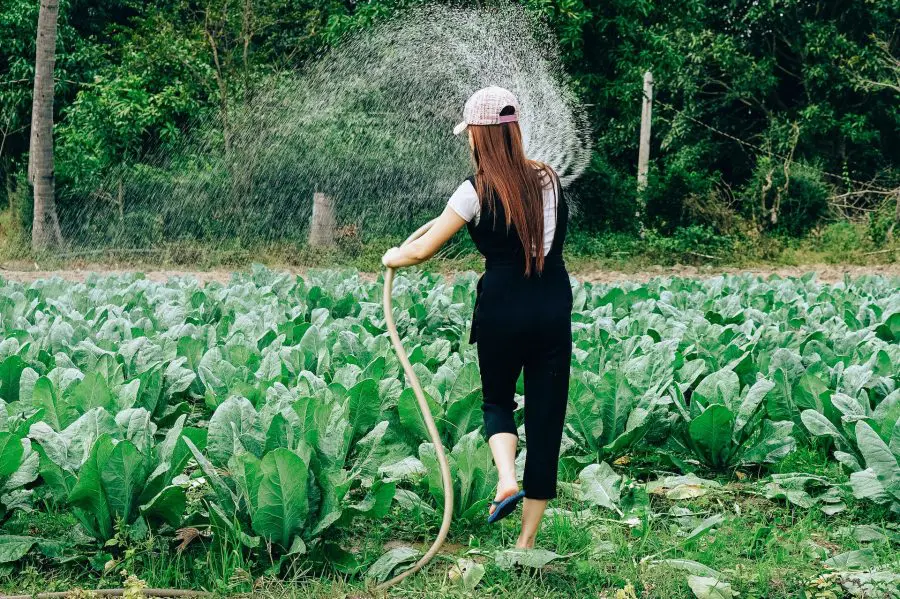
The great outdoors is where nature truly shines, but it’s also where water consumption can often run unchecked.
This section is dedicated to unraveling effective outdoor water conservation tactics that ensure your lawns and gardens remain lush, without draining our precious water resources.
Whether it’s mastering the art of efficient watering, harnessing alternative water sources, or managing your swimming pool in a water-smart way, these tactics are geared toward making every drop count.
As you explore these outdoor water conservation strategies, you’ll discover that a harmonious balance between maintaining beautiful outdoor spaces and conserving water is not only achievable but also incredibly rewarding.
Your journey towards creating a water-wise outdoor haven begins here, laying a path that’s lined with the beauty of nature and the essence of water conservation.
Lawn and Garden Watering Techniques
- Positioning Sprinklers: Position sprinklers so they water the lawn and garden, not the sidewalks or driveway.
- Watering on Windy Days: Avoid watering on windy days to prevent water loss through evaporation and drift.
- Longer Grass: Keeping your grass a bit longer can help retain soil moisture, reducing the need for frequent watering.
- Mulching and Organic Matter: Apply mulch and organic matter to garden beds to help retain soil moisture.
Utilizing Alternative Water Sources
- Rain Barrels: Install rain barrels to collect rainwater, which can be used to water plants or lawn areas.
- Grey Water Reuse: Utilize grey water from your home for watering non-edible plants. Ensure to use biodegradable, non-toxic soaps and detergents.
Water-Smart Swimming Pool Management
- Pool Covers: Using a pool cover can significantly reduce water evaporation, keeping your swimming pool water level maintained without the need for constant refilling.
- Regular Maintenance: Regularly check for and fix leaks in your swimming pool to prevent water loss.
VIII. Behavioral Changes for Effective Water Conservation
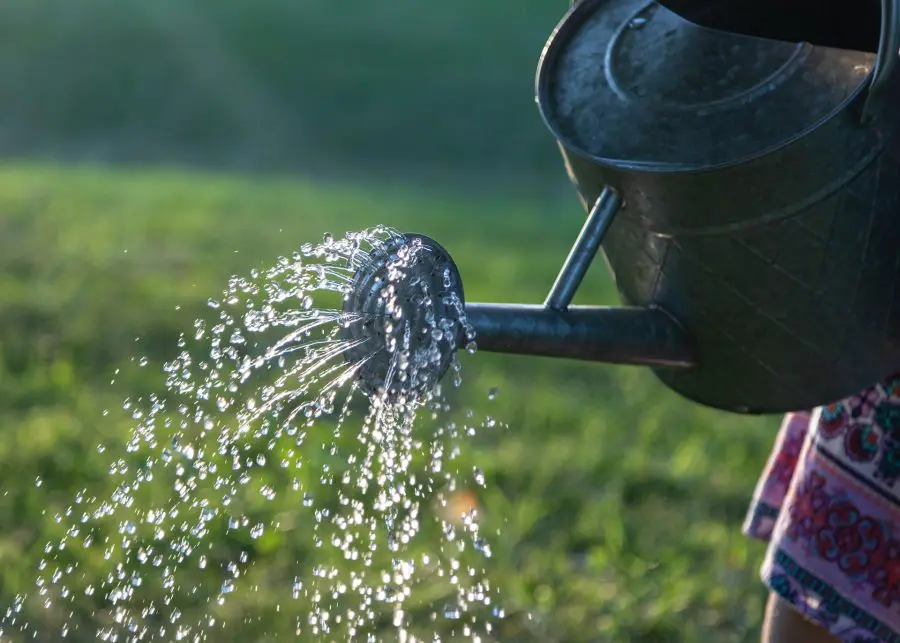
Transitioning towards effective water conservation is as much about adopting new practices as it is about altering existing behaviors.
This section sheds light on behavioral changes that can significantly enhance water conservation efforts.
From cultivating mindful water use habits to engaging in educational initiatives that foster a culture of conservation, the scope for making a difference is immense.
The ripple effect of these behavioral changes extends beyond individual households to communities at large, nurturing a collective consciousness about the importance of water conservation.
By taking small yet meaningful steps in altering daily water usage behaviors, we inch closer to a society where water conservation is a habitual practice, deeply ingrained in our lifestyle.
Explore the various facets of behavioral changes and how they pave the way for a more water-efficient and sustainable living environment.
Mindful Water Use Habits
- Short Showers: Opt for short showers instead of long ones or full baths to save a significant amount of water.
- Turning Off the Faucet: Make it a habit to turn off the faucet while brushing teeth or scrubbing dishes to prevent water wastage.
Educational Initiatives
- Educational Games: Incorporate fun activities like using food coloring to show kids how much water is used in flushing a toilet, or measuring water flow from different faucets to educate them about water conservation in an engaging manner.
Community Collaboration
- Community Car Wash Events: Organize community car wash events using commercial car wash facilities that recycle water, as a great way to raise awareness about water conservation while also fundraising for local causes.
By embracing these advanced strategies and behavioral changes, along with engaging in community and educational initiatives, individuals and communities can significantly enhance their water conservation efforts, paving the way toward a more sustainable and water-wise society.
Conclusion

Water conservation is not merely an act of saving water but a significant stride towards ensuring a sustainable and eco-friendly living environment.
The journey through understanding the basics of water conservation to adopt simple daily practices and leveraging modern technology lays down a pathway towards meaningful water savings.
As we recap the vital points discussed, the essence of community involvement and educating the younger generation resonates as a pivotal aspect of promoting water conservation on a broader scale.
-
Recap of Key Water Conservation Tips Discussed:
- Understanding the Water Cycle: Grasping the basics of the water cycle paves the way for appreciating the importance of water conservation.
- Daily Conservation Practices: Simple actions like fixing leaky faucets, taking shorter showers, and being mindful of water usage in daily chores contribute to significant water savings.
- Smart Home Innovations: Utilizing smart water meters, leak detection systems and water-efficient appliances can drastically reduce water waste and promote efficient water use.
- Sustainable Landscaping: Opting for native and drought-tolerant plants, along with employing efficient irrigation techniques, can substantially cut down water usage in outdoor spaces.
- Community Involvement: Engaging in community initiatives and programs fosters a collective effort towards water conservation, amplifying the impact of individual actions.
-
Encouragement to Adopt Water Conservation Practices and Contribute to a Sustainable Future:
- Take the Initiative: Every drop of water saved is a step towards a sustainable future. Start with small changes, and gradually incorporate more water-saving practices into your daily routine.
- Educate and Engage: Share your knowledge about water conservation with family, friends, and community members. Engage in local water conservation programs and encourage others to participate.
- Invest in Water-Saving Technologies: Consider investing in water-saving appliances and fixtures that will not only reduce your water usage but also lower your utility bills in the long run.
- Foster a Learning Environment for Kids: Educate the younger generation through fun and interactive activities that instill the value of water conservation, laying the foundation for a water-conscious future.
The essence of water conservation transcends the act of saving water.
It’s about creating a ripple effect that fosters a culture of sustainability, awareness, and collective responsibility.
By adopting water conservation practices and encouraging others to do the same, we contribute to a greener, more sustainable future for ourselves and the generations to come.





